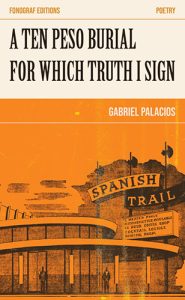The Briar Cliff Review – 2011
Volume 23
2011
Annual
Kenneth Nichols
The worst part about The Briar Cliff Review is that it only comes out once a year. The journal, published by Briar Cliff University (Sioux City, IA), is packed with uniformly excellent work. Editor Tricia Currans-Sheehan managed to find poetry, prose, and artwork that are technically sound and satisfying to a wide range of readers.
The worst part about The Briar Cliff Review is that it only comes out once a year. The journal, published by Briar Cliff University (Sioux City, IA), is packed with uniformly excellent work. Editor Tricia Currans-Sheehan managed to find poetry, prose, and artwork that are technically sound and satisfying to a wide range of readers.
Leslie Barnard’s “Drift River” won the journal’s fiction prize, and for good reason. Somewhat reminiscent of Ron Rash’s work, the story is a first-person piece told from the perspective of Carter, a fourteen-year-old young man who looks up to his older brother. Carter wants Joe to teach him how to hunt, how to run a business, and how to be a man, but Joe is more focused on Ms. Bishop, a young teacher at Carter’s school.
Barnard captures the adolescent’s conflicting desires to keep and share secrets. Perhaps most important to Carter is the secret spot on Drift River he and his brother shared: “a little outcrop of scoured bedrock you could only get to by picking your way across a wide, pitted marsh, then tunneling through a wall of stickers on all fours. The water was clear there, the fishing easy.” The end of the story leaves readers with a sad and potent image, along with the desire to reach out to those people in our own lives who appreciate us more than we know.
In decades past, the American poet was a much more prominent source of emotional counsel and social conscience. Gaylord Brewer, with his poem “Two Years,” reminds us that grief is often best confronted—or prepared for—with great verse in hand. The narrator of Brewer’s poem contemplates and commemorates the loss of a loved one. Although it seems that Brewer’s narrator laments the death of a child, nearly anyone can understand the weight of his grief: “You will never again tremble / through that bloody morning. / For this I am grateful. / How you suffered to stay with us.”
While America is indeed officially without defined social classes, Kim Eson’s “Meteor Dreams” examines the many economic and cultural strata that govern how we relate to those around us. As a Korean girl growing up in East New York, Eson attended school in a primarily “black and Hispanic” community and viewed her community through an “outsider[‘s]” lens. This openness allowed her to befriend Crane, a young black man who, like Eson, resisted the isolationist rules of their subcultures whenever possible. Eson’s story illustrates the confrontation between the need for justice and the hope for personal safety that has so often engendered human suffering.
Philip Michael Hook contributes two interesting pieces of graphic art to the issue. In what I am guessing is his “Beyond Appearances” series, Hook uses charcoal, graphite, crayon, and pastel to depict serene Midwestern/Plains scenes: a placid wintertime forest in one and a soft corn field in the other. A fiery, uncomfortable rage is artfully scribbled beneath these landscapes, hinting at the tempest within us all.
Equally notable is the journal’s museum-quality layout and graphic design. With its large, thick pages, The Briar Cliff Review is a great coffee table journal, appealing to those who simply want to flip through and look at some art or sit back and read a story.
[www.briarcliff.edu/bcreview]




